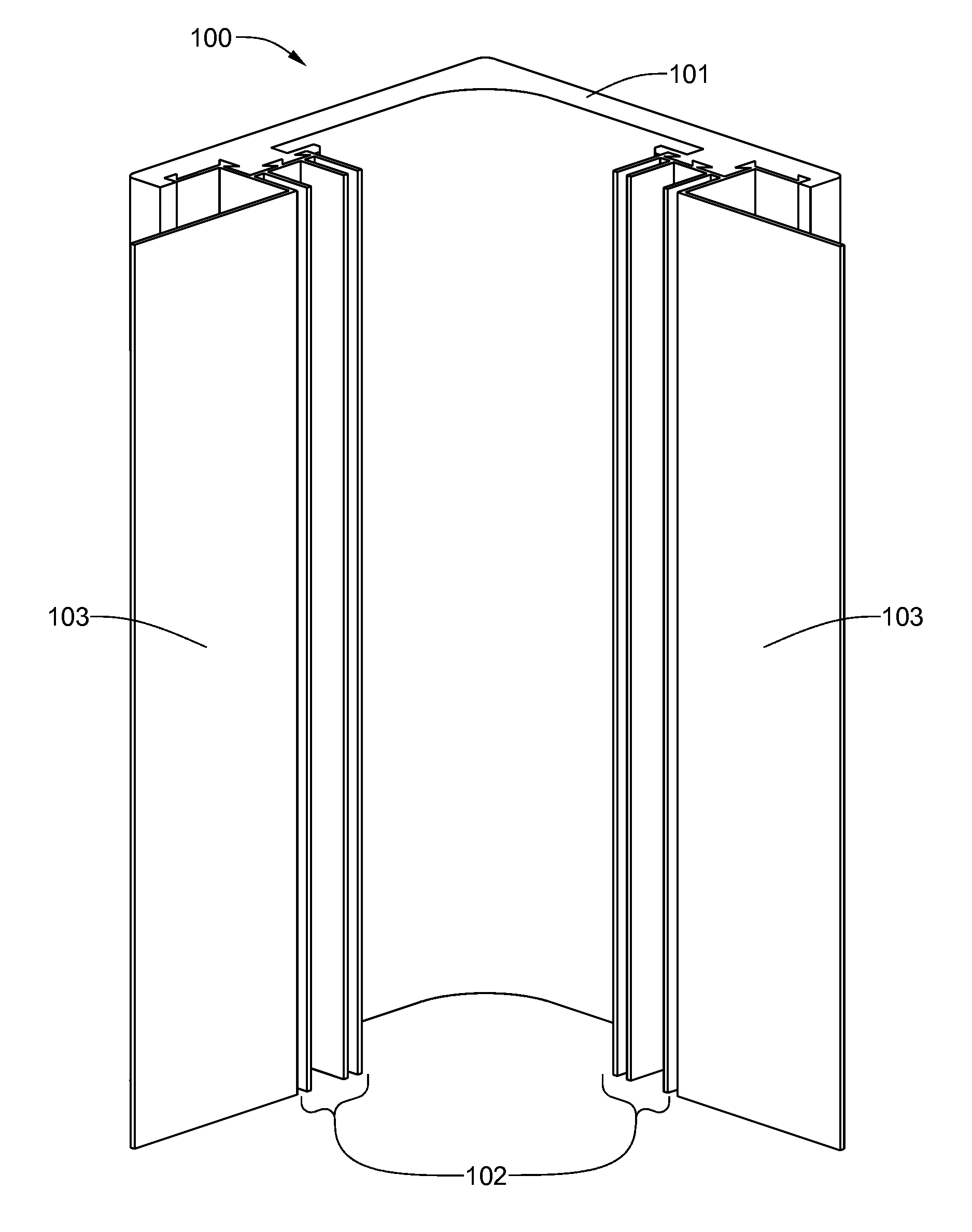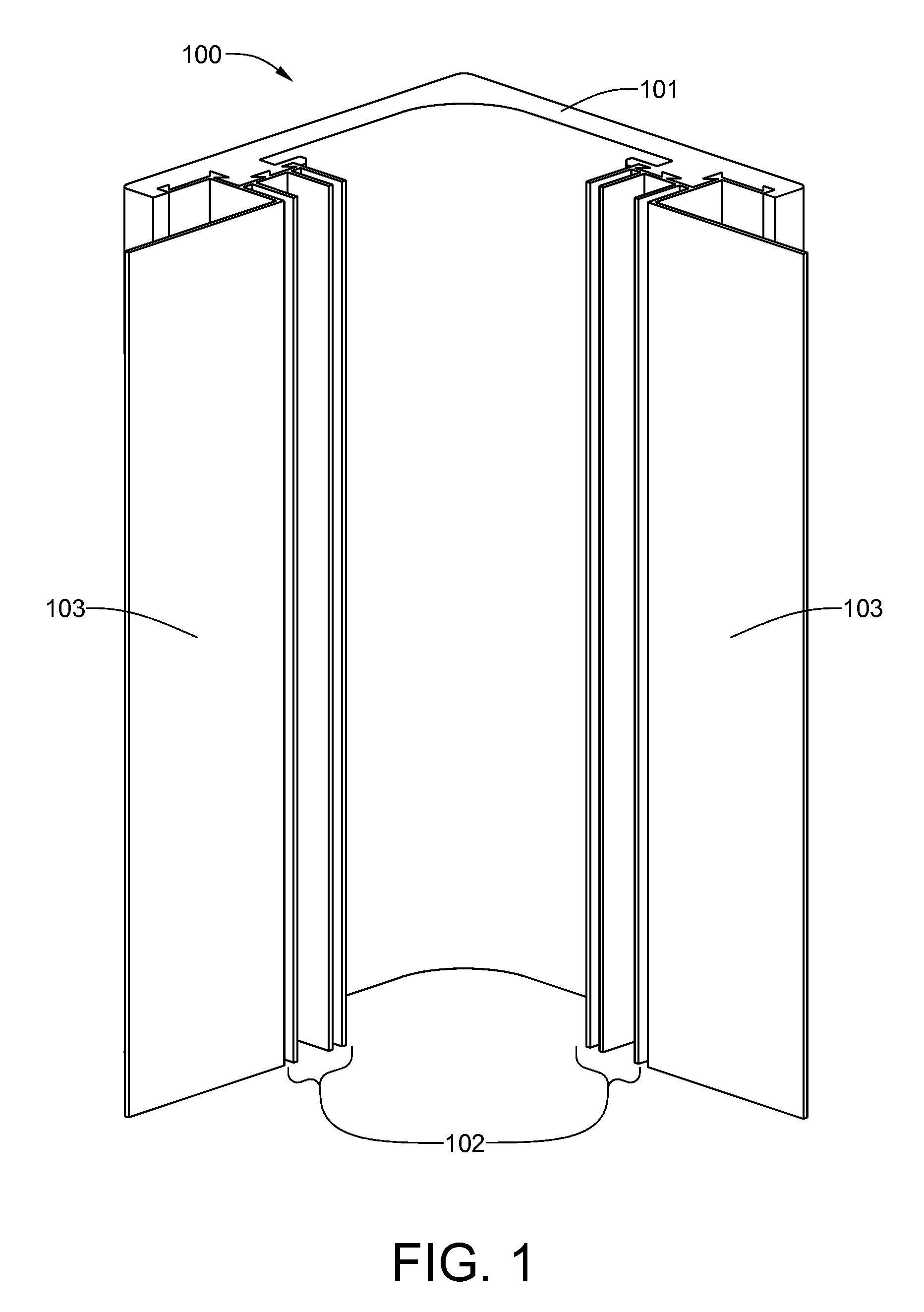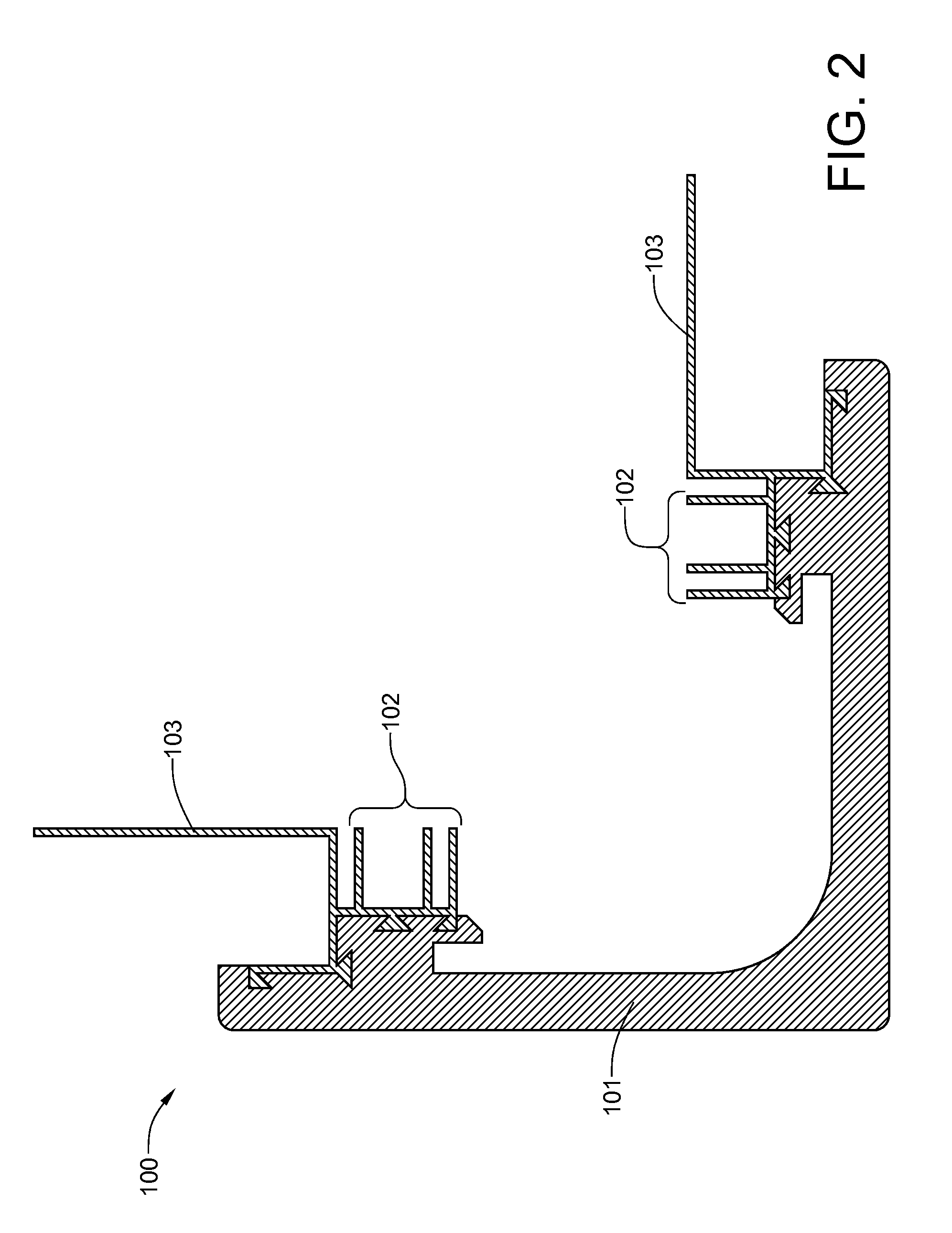Trim components for lapboard siding that are co-extruded from wood-plastic composites and polyvinyl chloride
a technology of lapboard siding and components, which is applied in the direction of synthetic resin layered products, wood layered products, transportation and packaging, etc., can solve the problems of no structural damage, no structural damage, no structural damage to the contraction of siding and trim components, etc., and achieve the effect of reducing installation costs and amount used
- Summary
- Abstract
- Description
- Claims
- Application Information
AI Technical Summary
Benefits of technology
Problems solved by technology
Method used
Image
Examples
first embodiment
[0107]Referring now to FIGS. 35 and 36, a first embodiment co-extruded combination board-and-batten board 3500 is designed for rapid installation. A one-piece board-and-batten composite material body 3501 includes both a board component 3501A and a batten component 3501B. Composite material standoffs 3503 protrude from the rear of board component 3501A. The combination board-and-batten board 3500 also includes a PVC standoff structure 3504 and a single attachment fin 3502, which is attached to the underlying structure. Thus, only one edge of each board 3500 is secured directly to the substrate. The other edge is held in place by the groove 3505 beneath the simulated batten 3501B on an adjacent board. The batten component 3501A of this combination board-and-batten board 3500 has rounded edges.
second embodiment
[0108]Referring now to FIGS. 37 and 38, a second embodiment co-extruded combination board-and-batten board 3700 is designed for rapid installation. A one-piece board-and-batten composite material body 3701 includes both a board component 3701A and a batten component 3701B. Composite material standoffs 3703 protrude from the rear of board component 3701A. The combination board-and-batten board 3700 also includes a PVC standoff structure 3704 and a single attachment fin 3702, which is attached to the underlying structure. Thus, only one edge of each board 3700 is secured directly to the substrate. The other edge is held in place by the groove 3705 beneath the simulated batten 3702 on an adjacent board. The batten component 3501A of this combination board-and-batten board 3500 has square edges.
[0109]Referring now to FIGS. 39 and 40, a mullion 3900 that is used to eliminate siding butt joints includes a composite material body 3901, a pair of PVC attachment fins 3902A and 3902B, and PVC...
PUM
| Property | Measurement | Unit |
|---|---|---|
| sizes | aaaaa | aaaaa |
| thick | aaaaa | aaaaa |
| thick | aaaaa | aaaaa |
Abstract
Description
Claims
Application Information
 Login to View More
Login to View More - R&D
- Intellectual Property
- Life Sciences
- Materials
- Tech Scout
- Unparalleled Data Quality
- Higher Quality Content
- 60% Fewer Hallucinations
Browse by: Latest US Patents, China's latest patents, Technical Efficacy Thesaurus, Application Domain, Technology Topic, Popular Technical Reports.
© 2025 PatSnap. All rights reserved.Legal|Privacy policy|Modern Slavery Act Transparency Statement|Sitemap|About US| Contact US: help@patsnap.com



